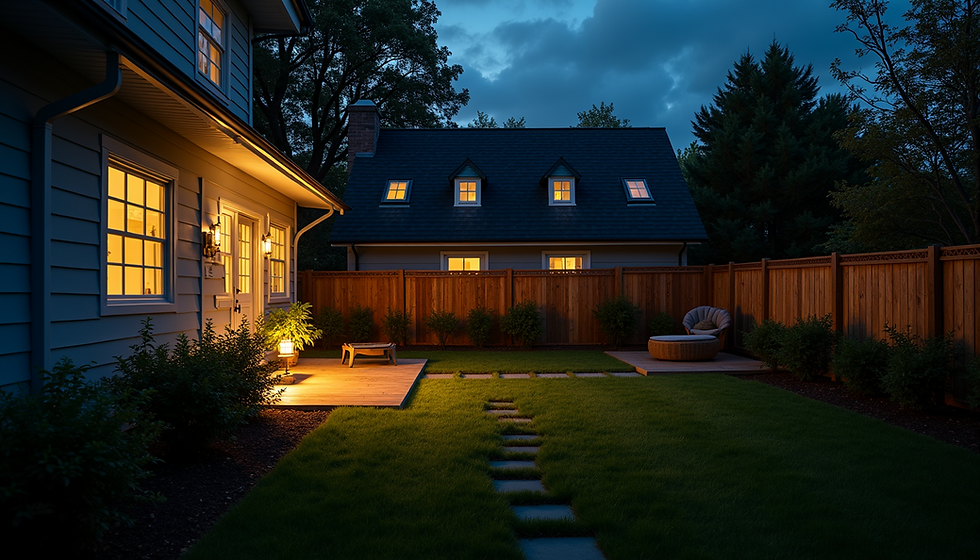The Ultimate Guide to Avoiding Costly Kitchen Remodel Mistakes: Tips from Professional Contractors
- Aaron

- Jan 24
- 3 min read
Updated: Mar 1
Remodeling your kitchen can be an exciting adventure that boosts your home's appeal and functionality. Yet, it's easy to make costly mistakes if you're not careful. Many homeowners unknowingly face challenges during their renovation projects. This guide highlights common errors and practical solutions, drawing on insights from professional contractors.
1. Planning Without a Clear Vision
One major pitfall is jumping into a kitchen remodel without a defined vision. Before beginning, take time to outline your goals. Reflect on these key aspects:
Functionality: Assess how you use your kitchen daily. Do you need more counter space for meal prep? Is additional storage essential to organize your tools and ingredients? For instance, if you often find yourself running out of cabinet space, consider adding a pantry or deeper drawers.
Style: Decide on a design aesthetic that matches your taste and home. For example, a modern kitchen might feature sleek lines and a muted color palette, while a farmhouse kitchen would lean on rustic elements like distressed wood and vintage fixtures.
A clear vision will guide your decisions and reduce potential confusion during the process.
2. Ignoring Your Budget
Budgeting is crucial when undertaking a kitchen remodel. Many homeowners underestimate the total costs or overlook possible unexpected expenses. Here are essential strategies:
Set a Realistic Budget: Research average renovation costs in your area. According to HomeAdvisor, the average kitchen remodel can range between $12,000 and $34,000, depending on size and scope.
Allocate a Contingency Fund: Setting aside 10-20% of your total budget for unexpected issues is prudent. For example, if your budget is $20,000, you should reserve an additional $2,000 to $4,000 for surprises like plumbing repairs.
By planning carefully, you can avoid unexpected financial strain.
3. Overlooking Lighting
Lighting is often an afterthought, yet it dramatically influences your kitchen's feel and usability. To enhance your kitchen's lighting:
Layered Lighting: Use a mix of ambient, task, and accent lighting. For example, overhead fixtures can provide general illumination, while under-cabinet lights can brighten work surfaces for cooking.
Natural Light: Utilize windows strategically. A well-lit kitchen can appear larger and be more inviting. Studies show homes with ample natural light sell 20% faster than those without.
Good illumination creates a welcoming atmosphere and can transform your kitchen.
4. Cutting Corners on Quality
In a bid to save money, some homeowners compromise on materials and appliances. This approach can be counterproductive:
Durability Matters: Choose high-quality materials like granite or quartz countertops. Although they may cost more upfront, they’ll last longer and need less maintenance, ultimately saving you money.
Energy-Efficient Appliances: Opt for appliances with high energy ratings. According to the U.S. Department of Energy, energy-efficient appliances can reduce energy use by as much as 50%. This leads to lower utility bills, enhancing the overall value of your home.
Prioritizing quality can significantly affect functionality and longevity.
5. Ignoring the Importance of Storage
Inadequate storage can lead to chaos in the kitchen. Plan for smart storage solutions:
Maximize Vertical Space: Install floor-to-ceiling cabinets or utilize wall-mounted racks. For example, a 10% increase in kitchen storage can lead to a significant boost in usability, helping to keep countertops uncluttered.
Functional Zones: Create distinct areas for cooking, prepping, and entertaining. This organization simplifies the cooking process and keeps the kitchen tidy.
Adequate storage is vital for an efficient cooking environment.
6. Focusing Solely on Trends
Designing your kitchen around fleeting trends can lead to dissatisfaction. To avoid this mistake, consider:
Timeless Design: Choose classic styles and colors. For instance, a white subway tile backsplash remains stylish no matter the decade.
Customization: Incorporate personal touches that reflect your tastes rather than blindly following the latest trends. Custom cabinetry or unique hardware can make your kitchen truly yours.
Creating a space reflecting your individual style will enhance your satisfaction in the long term.
Key Takeaways for a Successful Kitchen Remodel
A successful kitchen remodel involves thoughtful planning and decision-making. By clearly identifying your vision, setting a realistic budget, choosing the right contractor, and prioritizing quality and functionality, you will enhance your kitchen experience. Steer clear of these costly mistakes to enjoy a beautiful and efficient kitchen for years to come.





Comments